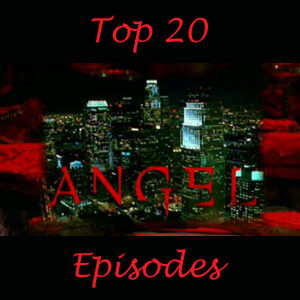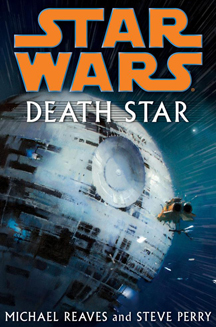While it’s not on many fans’ short list of the best “Star Wars” novels, Michael Reaves’ and Steve Perry’s “Death Star” (2007) is one of the most interesting “Star Wars” novels. It has elements of two ideas I’ve often thought would make great novels: First, a fresh “A New Hope” novelization incorporating prequel and Expanded Universe knowledge, and second, another “Tales” book.
Parts of “Death Star” tell the “A New Hope” story from the perspectives of Darth Vader, Grand Moff Tarkin and Admiral Motti. Unlike in the original “A New Hope” novelization, where Alan Dean Foster didn’t know the backstory, here we learn that Vader desires revenge for what Kenobi did to him in “Revenge of the Sith.” And in another passage, Vader tells himself he wasn’t truly born on Tatooine, he was “born” on Mustafar.
The novel also includes a handful of “Tales from the Death Star” split into small chunks and sprinkled together, with the characters’ paths eventually crossing. Reaves and Perry theorize (much like the characters in “Clerks” did in regards to the second Death Star) that there were a lot of innocent people on the battle station. We meet a bartender, a bouncer, a martial arts teacher, an architect, a smuggler and a librarian – none of whom are seen in the movie – plus a stormtrooper, a TIE fighter pilot and the superlaser gunner – all of whom are in the movie.
When chronicling Vader, Tarkin and Motti, and when running down the history of the Death Star’s design and construction and the chronology and whereabouts of the Death Star plans, Reaves and Perry draw on the prequels and more than a handful of EU stories. Rather than just a history book, though, “Death Star” includes answers for two major points of debate among “Star Wars” fans: What was the fate of Barriss Offee? And did Tarkin know Darth Vader was Anakin Skywalker? On the first point, Uli – a doctor we met in Reaves’ and Perry’s “MedStar” duology – had heard Barriss died on Felucia. (This book was written before Barriss’ imprisonment by the New Republic in “The Clone Wars,” which is the last time we saw her in the Disney canon.) On the second point, Tarkin strongly suspects Vader is Skywalker. Perhaps “Rebels” will someday give us Disney-canon answers to these burning questions.
The authors drop the ball in one case, though: They ignore Brian Daley’s “Star Wars” radio drama. In “Death Star,” Vader receives a report that the Tantive IV is above Tatooine, thus he travels there in the Devastator to engage it. In the radio drama, Vader’s Devastator engages the Tantive IV above Toprawa then immediately follows it through hyperspace to Tatooine. In smaller flubs, the authors skim over Vader’s torture of Leia – the most harrowing bonus scene of the radio drama – and present Tarkin’s and Motti’s discussions about the political power of the Death Star in a different manner. While every line of dialog from the movie is exactly transcribed, Reaves and Perry don’t give the same courtesy to the radio play.

On the other hand, “Death Star” goes overboard with some tie-ins. While it is a good idea to show the Tarkin-Daala relationship, it’s awkward that Daala has to get amnesia in order for her to not know about the Death Star by the time of the “Jedi Academy Trilogy.” And I have to scoff at conveniences such as the smuggler and bartender watching the destruction of Despayre (the doomed test planet targeted before Alderaan) on a video feed, Tarkin watching Vader strike down Obi-Wan on a video recording, and Vader breaking off from the Battle of Yavin to take on the fleeing medical shuttle containing this novel’s protagonists. These scenes might fit with the timing of the movie, but they don’t feel right.
There’s good political analysis peppered throughout “Death Star.” From the perspective of a fantasy story, the Death Star works as an example of big government gone too far. Using the illogical regulations inherent a massive bureaucracy as a catch-all, Reaves and Perry acknowledge some of “A New Hope’s” oddities and plot holes. The superlaser gunner is annoyed by the required helmet, and a stormtrooper wonders why he must always be in full gear on an impregnable battle station. It might make logical sense if the Death Star were a docking bay for Star Destroyers (which it clearly isn’t) or a training ground for troopers, perhaps with “X-Men” or “Ender’s Game”-style battle rooms, but the authors don’t go there. Nor do they clearly explain at what point the Imperials’ mission changes from catching the Rebels to letting them escape. Basically, the Death Star is a huge battle station packed with troops, TIE fighters and a superlaser. Plus, it’s a place the Empire’s bigwigs can call home — you know, work on Imperial Center, spend weekends on the Death Star.
Leia’s appraisal that “The more you tighten your grip, Tarkin, the more star systems will slip through your fingers” ultimately proves correct, but “Death Star” makes a case for the Tarkin Doctrine: the idea that fear of swift “justice” will keep the citizenry toeing the line, no matter how far Imperial laws drift from the ideals of the Old Republic. This is a nice addition to Luke Skywalker’s theory about how the blunt naming of Imperial ships draws a certain type of person to military service. In “X-Wing: Starfighters of Adumar” (1999), Wedge recounts Luke’s theory that names like Executor, Agonizer, Iron Fist and Venom (and I think we can add Death Star) helped speed up the “corruption (and) seduction of the not-too-unwilling.” People like Tenn Graneet.
Graneet is the guy who lowers the superlaser lever to destroy Alderaan, making him the biggest mass murderer in galactic history if you use the standard of “pulling the trigger” as opposed to Palpatine’s method of setting things in motion by manipulating people. Graneet’s action is a stark illustration of how dictators rely on people who will “just follow orders.” Graneet is drawn to military service by jingoism, and he has convinced himself that it’s a worthy goal to create an environment where there are no wars, conflicts, protests or disagreements due to everyone fearing instant death from above. But when he actually reflects on the knowledge that he killed at least a billion people (Wookieepedia could’ve told him Alderaan’s population was 2 billion – a number that, to use Earth references, blows away Mao, Pol Pot, Stalin and Hitler combined) – and there’s no way all of them deserved the death penalty – well, let’s just say he has trouble getting a good night’s sleep.
“Death Star” has too many flaws to be categorized as great, and the canon status is sketchy due to the book’s ignorance of the radio drama and the absence of the major Death Star action later chronicled in the “Force Unleashed” series. Still, it’s a tremendously fun and politically rich “Legend” worth reading.

